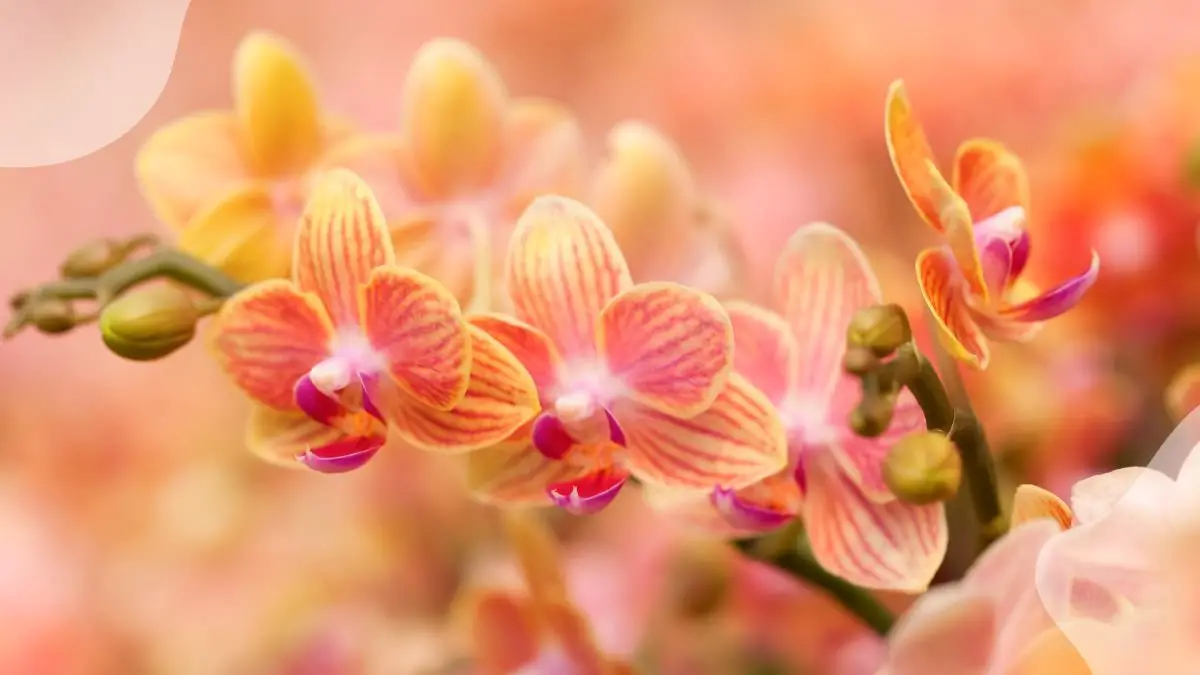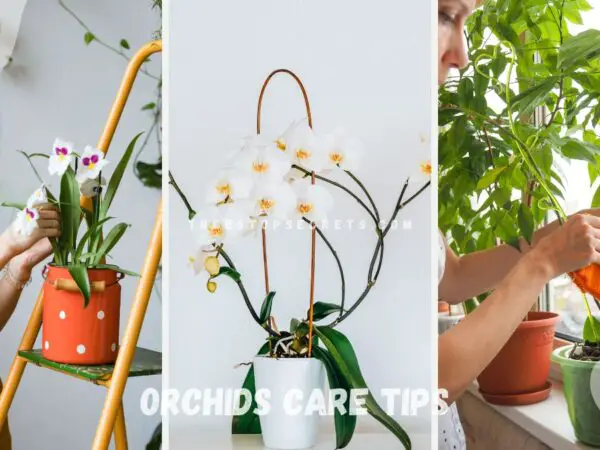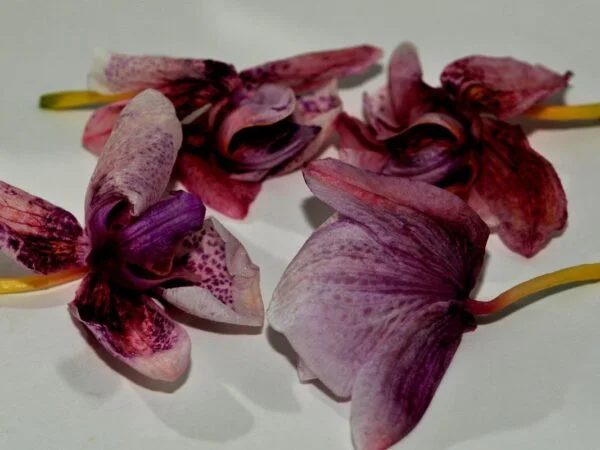Exploring orchid dormancy unveils a crucial phase in the lifecycle of these captivating plants. Understanding the dormant period is key to fostering healthy growth and vibrant blooms. Orchids, with their intricate beauty, have long fascinated botanists and enthusiasts alike. The historical context of orchid dormancy dates back centuries, with early civilizations admiring these flowers for their mystique and elegance. Unveiling the secrets of dormant orchids' dormancy not only enriches our botanical knowledge but also empowers us to nurture these delicate marvels with precision.
Key Takeaways
- Prepare for Dormancy: Understand the signs of orchid dormancy and adjust care routines accordingly to support healthy growth.
- Careful Monitoring: Regularly check moisture levels and light exposure during dormancy to prevent issues like overwatering or inadequate light.
- Revive with Care: When reviving dormant orchids, gradually reintroduce water and nutrients to avoid shocking the plant.
- Encourage Reblooming: Provide proper conditions post-dormancy to encourage orchids to bloom again, such as adjusting light and temperature.
- Address Challenges: Be proactive in addressing common challenges like pests or diseases that may arise during dormancy to maintain orchid health.
- Optimize Care: Implement advanced care tips like adjusting humidity levels or fertilization to maximize orchid growth and blooming potential.
Understanding Orchid Dormancy
Signs of Dormancy
Orchid dormancy is indicated by dropping blooms, with stems and leaves drying out and becoming limp. This period is a natural part of the orchid life cycle.
Resting Period Basics
Orchid dormancy serves as a resting period between bloom cycles, allowing the plants to prepare for reblooming. This phase is crucial for the overall health of orchids.
Why Rest Matters
The importance of orchid dormancy lies in ensuring their long-term health. This rest period enables orchids to store energy for future blooms, contributing to their overall vitality.
Preparing for Dormancy
Water Management
During orchid dormancy, it is crucial to adjust watering frequency to mimic their natural environment. Orchids require less water during this period to prevent root rot and bloom. Proper drainage is essential to avoid waterlogging, ensuring that excess water can escape easily.
Maintaining the balance in watering orchids is key to their health during dormancy. Overwatering can lead to issues like root rot, while underwatering can cause stress to the plant. Understanding the specific watering needs of your orchids is essential for their well-being.
Feeding Needs
When it comes to feeding orchids during dormancy, using a balanced 20-20-20 fertilizer is recommended. This balanced formula provides the necessary nutrients without overwhelming the plant. Diluting the fertilizer to half strength helps prevent nutrient burn and ensures optimal feeding for the orchids.
Feeding your orchids every other week during dormancy supports their reblooming process. Providing consistent nutrition helps the plants store energy and prepare for their next flowering period. Understanding the feeding requirements of orchids is vital for their overall growth and development.
Ideal Locations
Placing orchids in cooler environments during dormancy is beneficial for their rest period. Maintaining temperatures between 55-65 degrees Fahrenheit provides the optimal conditions for orchids to thrive. The cool environment triggers the plant's natural cycle, preparing them for future growth and blooming.
Understanding the significance of location in triggering reblooming is essential for orchid enthusiasts. The right environment can stimulate the plant's growth and encourage healthy flowering cycles. By providing the ideal conditions, you can ensure that your orchids thrive and produce beautiful blooms.
Care During Dormancy
Managing Water
During orchid dormancy, monitor water intake carefully to prevent issues like root rot. Adjust watering routines according to the orchid's specific needs. Properly allow drying between watering sessions to avoid overwatering.
Feeding Correctly
For optimal growth during dormancy, utilize a balanced 20-20-20 houseplant fertilizer. Dilute the fertilizer to half strength for effective feeding without overwhelming the orchid. Consistently feed orchids every other week to provide essential nutrients and support growth.
Pruning and Repotting
Prune orchids after dormancy ends to stimulate new growth and maintain plant health. If necessary, repot orchids to ensure they receive fresh nutrients and adequate space for growth. Understanding the significance of pruning and repotting is crucial for sustaining orchid health.
Reviving Dormant Orchids
Recognizing Revival Signs
- Identify the emergence of new spikes from dormant orchids, a clear sign of revival.
- Look for changes in the orchid's appearance like vibrant colors or increased firmness.
- Understand visual cues such as active root growth signaling the end of dormancy.
Enhancing Growth
- Support the growth of orchids post-dormancy by providing proper care and attention.
- Ensure adequate light exposure and water to promote healthy growth and blooming.
- Realize the critical role of care in enhancing overall orchid growth and vitality.
Rebloom Your Orchid
Steps to Rebloom
To rebloom your orchid successfully, start by fertilizing it with a balanced 20-20-20 fertilizer after the dormancy period. This step provides essential nutrients for the plant's growth. Next, consider moving your orchids to cooler environments. Cooler temperatures can stimulate the reblooming process in your beloved orchid plant. Once new spikes begin to emerge, resume your regular watering routines. Proper hydration is crucial for the health of your orchid blooms.
Timing and Patience
During the dormancy period, it is crucial to exercise patience with your orchids. Understand that this phase is necessary for the plant's overall well-being. To ensure successful reblooming, familiarize yourself with the timing required for orchids to bloom again. Remember, each type of orchid, such as cymbidium orchids or dendrobium orchids, may have specific timelines for reblooming. While waiting for your phalaenopsis orchid or purple orchid to revive, practice patience and provide consistent care.
Common Challenges
Overwatering Issues
Overwatering orchids during dormancy can be detrimental to their health. Signs of overwatering include yellowing leaves, which indicate root rot. This condition arises due to the lack of oxygen in waterlogged soil, leading to root suffocation.
To avoid overwatering, allow the orchid's roots to dry out between watering sessions. This practice helps prevent root rot and ensures the plant's overall well-being. Understanding the risks associated with excessive watering is crucial for maintaining a healthy orchid during dormancy.
Light and Temperature
Providing adequate light is essential for orchids during dormancy as it influences their growth and blooming potential. Orchids typically require indirect sunlight to thrive, ensuring they receive enough light without getting scorched.
Maintaining optimal temperatures between 55-65 degrees Fahrenheit is key to supporting orchids' dormancy phase. Extreme temperatures can stress the plants, affecting their ability to go dormant successfully. Understanding how light and temperature impact orchid health is vital for their overall care.
Advanced Care Tips
Monitoring Growth
After orchid dormancy, monitor the plant's growth carefully to ensure it is thriving. Look for new leaves, stems, and spikes emerging as signs of revival. Observing these changes helps assess the orchid's progress and overall health.
Keep a close eye on any developments in your orchid post-dormancy. Changes in growth can indicate whether the plant is responding well to its environment. Regularly checking for growth signals ensures timely adjustments to the care routine.
Adjusting Care Seasonally
To provide optimal care, adapt your routines to seasonal variations. Adjust watering frequency and feeding schedules based on the changing seasons. Orchids have different needs throughout the year, requiring flexibility in care practices.
Tailor your care approach according to the seasons to meet the orchid's specific requirements. Understanding how seasonal changes affect your plant allows you to provide the best care possible. Adapting to these shifts ensures the orchid remains healthy and vibrant.
Success Stories
Before and After
Preparing orchids for dormancy involves adjusting care routines to meet their specific needs. This process sets the stage for a successful dormant period. Post-dormancy, orchids require special care to ensure optimal growth and blooming. Understanding the transition phases is crucial for maintaining orchid health.
To prepare orchids for dormancy, gradually reduce watering frequency and lower light levels. This signals to the plant that it's time to enter dormancy. After dormancy, gradually increase watering and light exposure to stimulate new growth. This helps the orchid transition back into its active growing phase.
Tips from Experts
When it comes to caring for orchids during dormancy, seeking advice from experienced growers is invaluable. These experts can provide tailored tips based on specific orchid varieties. Learning from seasoned growers about best practices for orchid dormancy ensures optimal plant health and longevity. Implementing expert tips can significantly impact an orchid's blooming potential.
Experts recommend maintaining consistent temperature and humidity levels during dormancy to prevent stress on the plant. Proper ventilation is also crucial to prevent fungal infections. Providing adequate nutrients post-dormancy promotes healthy growth and vibrant blooms.
Closing Thoughts
You've now mastered the art of understanding, preparing for, and caring during orchid dormancy. With these insights, you're equipped to revive dormant orchids and witness their mesmerizing rebloom. Remember, challenges may arise, but armed with advanced care tips and inspired by success stories, you're ready to tackle them head-on. By following these guidelines, you can ensure your orchids thrive through dormancy and beyond. Keep nurturing your green companions with love and patience, and you'll reap the rewards of their resplendent beauty.
Take action today! Apply these strategies to your orchid care routine and share your success stories with fellow enthusiasts. Together, let's create a community of thriving orchid keepers who celebrate the joy of cultivating these exquisite flowers. Your journey to orchid mastery awaits!
Frequently Asked Questions
### What is orchid dormancy?
Orchid dormancy is a natural phase where the plant slows down growth. It's crucial for conserving energy and preparing for the next blooming cycle.
How do I prepare my orchid for dormancy?
Reduce watering and fertilizing gradually as days get shorter. Place your orchid in a cooler spot with less light to mimic its natural environment.
What care does an orchid need during dormancy?
During dormancy, water sparingly to prevent root rot. Ensure good air circulation and maintain a slightly cooler temperature to help the orchid rest.
How can I revive dormant orchids?
Gradually increase watering and move the orchid to a brighter location as it exits dormancy. Resume regular care routine to encourage new growth.
How do I encourage my orchid to rebloom?
After dormancy, provide adequate light, water, and fertilizer. Monitor humidity levels and maintain consistent care to stimulate flower spike development.
Image Source: Paid image from CANVA





